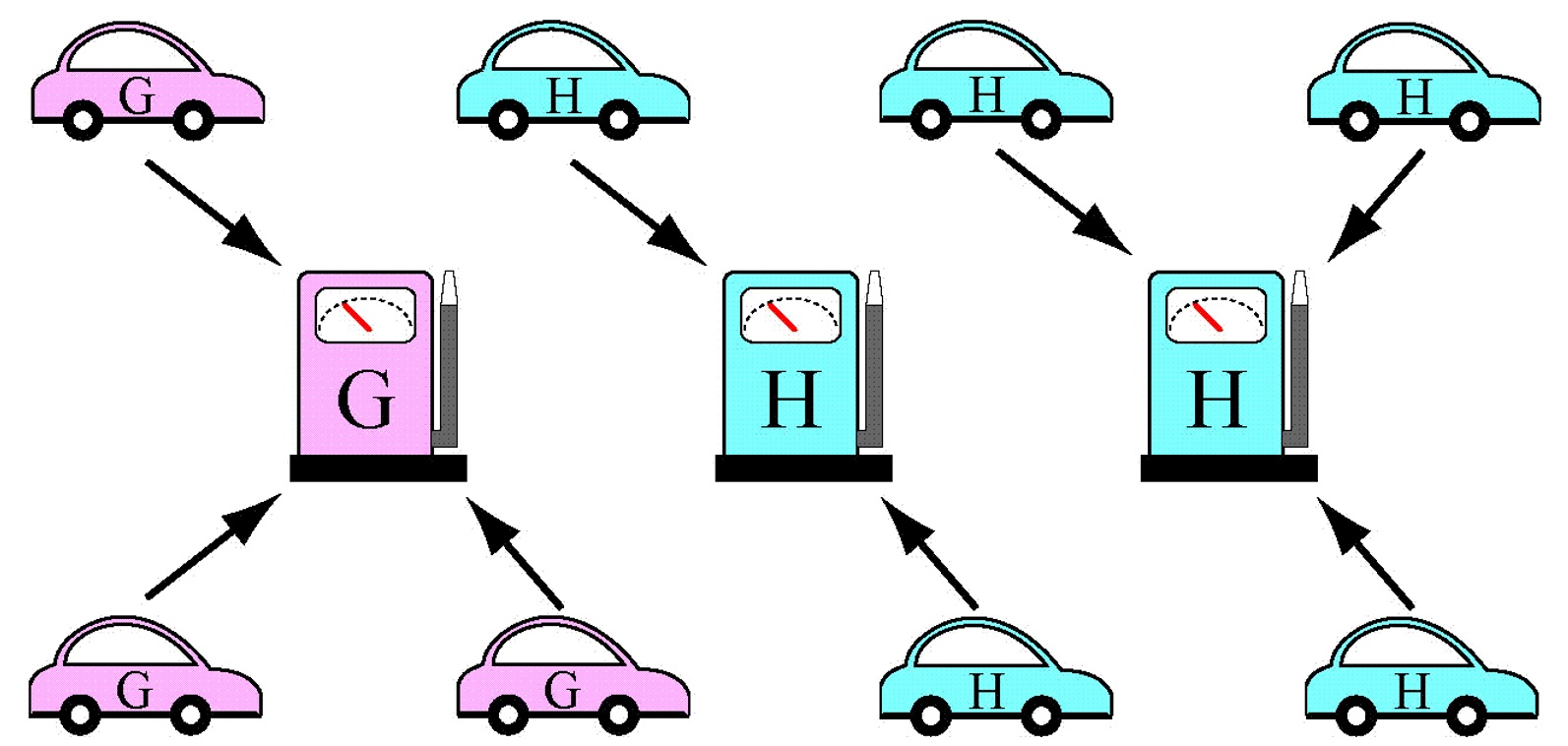READINGS研究紹介
For Future Social Systems
 Furthermore, it should be mentioned that
this methodology can be implemented as either a link-state protocol or a distance-vector protocol.
Therefore, it well supports the existing Internet.
Simulations show that this methodology raises network utilization
and significantly reduces end-to-end delay and jitter.
Furthermore, it should be mentioned that
this methodology can be implemented as either a link-state protocol or a distance-vector protocol.
Therefore, it well supports the existing Internet.
Simulations show that this methodology raises network utilization
and significantly reduces end-to-end delay and jitter.
For Detail -> (Refereed Journal Articles)
 These
models clarify that the optimal number of total stations varies with the diffusion rate of FCVs. If only gas
and hydrogen stations are assumed, more stations are needed in the transition period. If hybrid stations are
introduced, the number of total stations takes minimum value during the transition period. Moreover, the
optimal solution indicates that all stations should become hybrid stations in the middle of the transition.
Finally, the models are applied to Yokohama City in Japan and the solutions of the models are examined.
These
models clarify that the optimal number of total stations varies with the diffusion rate of FCVs. If only gas
and hydrogen stations are assumed, more stations are needed in the transition period. If hybrid stations are
introduced, the number of total stations takes minimum value during the transition period. Moreover, the
optimal solution indicates that all stations should become hybrid stations in the middle of the transition.
Finally, the models are applied to Yokohama City in Japan and the solutions of the models are examined.
For Detail -> (Refereed Journal Articles)
A New-Multi-Path Routing Methodology Based on Logit-Type Probability Assignment
We have presented a new multi-path routing methodology, MLB-routing, that is based on the multinomial logit model, which is well known in the random utility field. The key concept of the study is to set multiple paths from the origin to the destination, and distribute packets in accordance with multinomial logit type probability. Since MLB-routing is pure multi-path routing, it reduces the convergence on some links and increases bandwidth utilization in the network. Unlike existing multi-path routing schemes, which pre-set alternate paths, the proposed method can dynamically distribute packets to every possible path and thus is more efficient. Furthermore, it should be mentioned that
this methodology can be implemented as either a link-state protocol or a distance-vector protocol.
Therefore, it well supports the existing Internet.
Simulations show that this methodology raises network utilization
and significantly reduces end-to-end delay and jitter.
Furthermore, it should be mentioned that
this methodology can be implemented as either a link-state protocol or a distance-vector protocol.
Therefore, it well supports the existing Internet.
Simulations show that this methodology raises network utilization
and significantly reduces end-to-end delay and jitter. For Detail -> (Refereed Journal Articles)
Optimal Number of Hydrogen Stations with Respect to the Diffusion of Fuel Cell Vehicles
In this paper, the optimal numbers of gas and hydrogen stations are examined. Recently, the possibility of gasoline vehicles being replaced with fuel cell vehicles (FCV) is being examined in the coming hydrogen society. The realization of this scenario however needs a large number of hydrogen refueling stations, which hardly exist at the present. We first calculate the optimal number of hydrogen stations to minimize the sum of two types of cost: 1) operation cost of hydrogen stations and 2) transportation cost of FCVs to the nearest stations. Next, we incorporate the diffusion rate of FCVs into the model to determine the optimal number of gas stations and that of hydrogen stations simultaneously. We also provide an advanced model that considers hybrid stations, with which both gasoline and FCVs can refuel. These
models clarify that the optimal number of total stations varies with the diffusion rate of FCVs. If only gas
and hydrogen stations are assumed, more stations are needed in the transition period. If hybrid stations are
introduced, the number of total stations takes minimum value during the transition period. Moreover, the
optimal solution indicates that all stations should become hybrid stations in the middle of the transition.
Finally, the models are applied to Yokohama City in Japan and the solutions of the models are examined.
These
models clarify that the optimal number of total stations varies with the diffusion rate of FCVs. If only gas
and hydrogen stations are assumed, more stations are needed in the transition period. If hybrid stations are
introduced, the number of total stations takes minimum value during the transition period. Moreover, the
optimal solution indicates that all stations should become hybrid stations in the middle of the transition.
Finally, the models are applied to Yokohama City in Japan and the solutions of the models are examined.For Detail -> (Refereed Journal Articles)
HONMA LABORATORY
The University of Tokyo
Institute of Industrial Science
4-6-1, Komaba, Meguro-ku, Tokyo, 153-8505, JAPAN